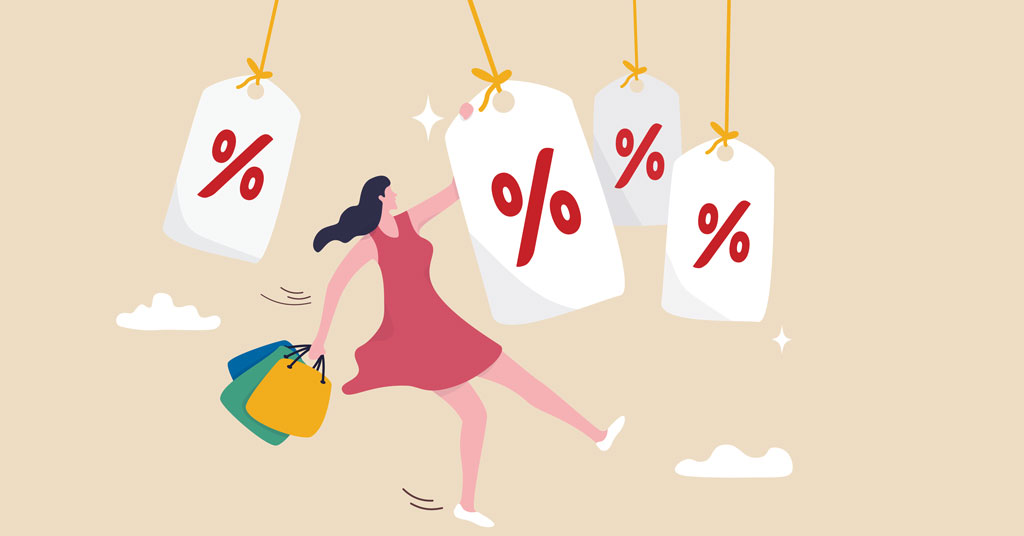The 4 D's of Holiday Shopping Behavior

It’s mid-September and Halloween candy and costumes are already in the stores. But before you know it, the Christmas holiday shopping season will be upon us. Jane Butler, VP of Sales–Retail Ecommerce at Google, offers “The 4 Ds of Holiday Shopping Behavior” to help retailers—online and off—get it right this holiday season. (Editor: The original post ran on Adweek’s website as a sponsored article from Google.)
With shoppers moving seamlessly across digital, physical, virtual and social platforms, it can be difficult to show up in the right way for them. As the holiday season approaches, showing up at the right moment with the right message can make the difference in whether you hit your year-end targets… or not.
But by understanding the four holiday shopper mindsets and using AI-powered tools to show up at each stage of the shopper journey in more connected, consistent ways, marketers will be well-positioned to hit their business goals this season and beyond.
#1 Deliberate
The holiday season starts off with shoppers in a deliberate mindset, which typically happens throughout October and into early November—although for some it can start as early as May.
The deliberate shopper wants to get a jump start on planning their gift list, seeking out product reviews, researching price, availability, and promotions, and might even strategically purchase gifts during this time frame to spread their spending through the season. By the end of October, 50% of Americans are shopping for the holidays over any two-day period; and an average of 29% have completed their holiday shopping, according to a Google/Ipsos Holiday Shopping Study.
To make sure you’re not missing these shoppers and leaving early holiday sales on the table, it’s important to work on your holiday strategy well in advance to be there at the right moment for this shopper. With the help of AI, marketers can interpret billions of signals on search and cast a wide coverage net as these shoppers seek out gift ideas. Marketers also can take this time to build a deep funnel of interest with video content to be ready to close with the deliberate shopper as they enter a purchase-oriented mindset.
#2 Deal-seeking
Shifting into the November time frame and approaching Cyber Week, shoppers’ early holiday planning shifts into a more deal-seeking mindset.
Shoppers are ready to buy, but on their terms. They have done their homework, researching, comparing products, and watching videos, and know the best value for their money. And, while shoppers have come to expect great deals during “Cyber 5” (the 5 days between Thanksgiving and Cyber Monday), these shoppers have caught on that many retailers have begun releasing deals earlier, and/or are keeping them active in the days following Cyber Monday.
To make the most of the deal-seeking mindset, retailers must not only continue their investment against the traditional Cyber 5 period, they must also continue to invest in these moments the week before and the week after Cyber Week to capture the full opportunity.
#3 Determined
Moving into the December time frame, the shopper shifts into a determined mindset. It’s crunch time to get all those gifts for loved ones, so shoppers now have high intent and are ready to purchase.
In the U.S., digital assumes an even bigger, more critical role to win this determined shopper. This is because the average number of digital resources that shoppers use increases significantly after the Cyber period, according to a Google/Ipsos Holiday Shopping Study.
Given the time crunch, omnichannel strategies move to the forefront of marketers’ plans. To bridge your digital and physical storefronts, best-in-class omnichannel AI solutions that feature local offerings, promotions, and inventory are a key lever to deliver sales.
#4 Devoted
Finally, the devoted mindset kicks in after the holiday, spanning from Christmas Day into early January. The gift recipient shifts though, with a significant bump in the number of self-gifting shopping occasions post-holiday, according to a Google/Ipsos Holiday Shopping Study.
This opens up new chances to connect with loyal shoppers and build momentum into the new year. While shoppers take advantage of seasonal deals and special inventory to buy for themselves all season, it really takes off starting the day after Christmas once they’ve tackled their gift list. These shoppers are also more likely to consider a loyalty program when making a purchase, which can set you up with much-needed momentum into the next year.
One of the most important places to accomplish this is with your apps. According to data.ai, the two weeks starting Dec. 25 were the biggest iOS and Google Play combined app download weeks of last year.
App campaigns can help you ensure that if you were on a shopper’s phone on Dec. 24 and they get a new phone this holiday season, your app makes it onto the new phone and you don’t lose a valued customer in the new year. The ability to connect in an app not only enables a quicker checkout, it also connects customers to loyalty program rewards in one seamless experience. This keeps shoppers coming back to you, with 87% of retailers agreeing that their app users are more loyal and have a higher lifetime value than non-users, according to Google/Ipsos findings.
Jane Butler, Vice President of Sales–Retail Ecommerce at Google, is a 20-year veteran at the company and has held multiple leadership roles on the advertising side of the business.
Share this Feature
Recommended Reading:
| ADVERTISE | SPONSORED CONTENT |
FRANCHISE TOPICS
- Multi-Unit Franchising
- Get Started in Franchising
- Franchise Growth
- Franchise Operations
- Open New Units
- Franchise Leadership
- Franchise Marketing
- Technology
- Franchise Law
- Franchise Awards
- Franchise Rankings
- Franchise Trends
- Franchise Development
- Featured Franchise Stories
| ADVERTISE | SPONSORED CONTENT |

$200,000
$125,000





 The multi-unit franchise opportunities listed above are not related to or endorsed by Multi-Unit Franchisee or Franchise Update Media Group. We are not engaged in, supporting, or endorsing any specific franchise, business opportunity, company or individual. No statement in this site is to be construed as a recommendation. We encourage prospective franchise buyers to perform extensive due diligence when considering a franchise opportunity.
The multi-unit franchise opportunities listed above are not related to or endorsed by Multi-Unit Franchisee or Franchise Update Media Group. We are not engaged in, supporting, or endorsing any specific franchise, business opportunity, company or individual. No statement in this site is to be construed as a recommendation. We encourage prospective franchise buyers to perform extensive due diligence when considering a franchise opportunity.